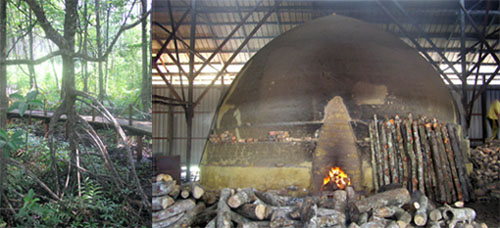Mangrove forests are one of the Earth’s most rapidly disappearing ecosystems. These coastal forests, with trees adapted to growing in salty soil and water, protect coastlines from erosion and are a natural barrier to strong coastal storms and tsunamis. The tangled root systems are a nursery for shrimp and many species of fish that go on to live their adult lives in the open ocean, while also acting as a home for many types of birds and often a resting place for migratory flocks.
Close to Kuala Sepetang (formerly known as Port Weld, site of Malaya’s first railway) is the Matang Mangrove Forest, the largest example in West Malaysia, covering some 40,000 hectares. Divided by seven major estuaries and with five small fishing villages inside it, it was designated as a Permanent Forest Reserve in 1906. Intensively managed by the Forestry Department with a 30-year rotation cycle it produces trees for charcoal and construction poles without reducing its effectiveness as a home for wildlife and a natural barrier for the coast, while providing a variety of employment for local people.
One such employment opportunity is a family run charcoal factory located right in the heart of the mangrove forest. This enterprise is run by Mr. Chuah Chow Aun and his younger brother, the second generation of the family which has owned the business since the 1930’s. He has around 80 workers and 100 kilns. Charcoal production here continues in much the same way as it has for almost 80 years with no modern machinery, almost everything being done manually.
The process of producing charcoal has several stages: first the trees are harvested taking only those which are 30 years old or more where they will be replaced with new young trees. Then at high tide they are loaded into small boats and shipped to the factory where they are stripped of their bark by hand. Next they are carried to the kilns, shaped like igloos, which have been prepared for them by the kiln builder who simply uses his experience rather than drawings to complete his task.
Stood on end in the kiln with almost no space between them, the logs are heated by a roaring fire which brings up the inside of the kiln to about 220°C, at which temperature water starts to vaporise from the logs. This stage takes 8 to 10 days, the condition of the logs being judged by the feel of the smoke that comes out of the kiln. When judged the right moment, the kiln is completely shut off and the baking process continues for another 12 to 14 days at a temperature of around 83°C. Then, with the fire no longer burning, the 8 day cooling process is started.
Once the kiln is opened, all the water should be vaporised out of the wood and the charcoal should look shiny black. The still-warm charcoal is carried out of the hot kiln and sorted, bagged by hand or delivered as whole logs. Most of the charcoal from Mr. Chuah’s factory is exported to Japan. The pieces that are not suitable for export are sold locally where it is believed to have healing properties and keep away mosquitoes.
This is a place well worth a visit for one never knows how long these old trades will continue, particularly when, like the charcoal factory, there is no mechanisation, everything being done the hard way, by hand!
A final thought, charcoal was once used instead of toothpaste! Ugh!


